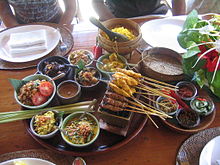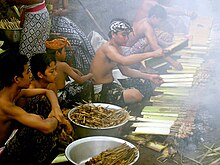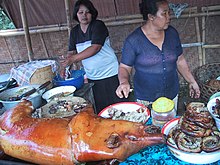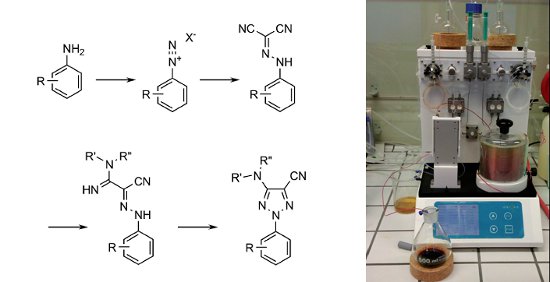
Using the Uniqsis FlowSyn flow chemistry system researchers from the UCB Biopharma. Belgium
have developed a flow synthesis of 2-substituted 1,2,3-triazoles that
demonstrates improvements over the conventional batch route.
The route involves the diazotisation of anilines and condensation with malononitrile followed by the nucleophilic addition of ammonia or an alkylamine and finally a novel copper catalysed cyclisation. The intermediate azide was generated and consumed in situ which enabled safe scale up under the flow-through conditions employed.
1,2,3-Triazole
has become one of the most important heterocycles in contemporary
medicinal chemistry. The development of the copper-catalyzed Huisgen
cycloaddition has allowed the efficient synthesis of 1-substituted
1,2,3-triazoles. However, only a few methods are available for the
selective preparation of 2-substituted 1,2,3-triazole isomers. In this
context, we decided to develop an efficient flow synthesis for the
preparation of various 2-aryl-1,2,3-triazoles. Our strategy involves a
three-step synthesis under continuous-flow conditions that starts from
the diazotization of anilines and subsequent reaction with
malononitrile, followed by nucleophilic addition of amines, and finally
employs a catalytic copper(II) cyclization. Potential safety hazards
associated with the formation of reactive diazonium species have been
addressed by inline quenching. The use of flow equipment allows reliable
scale up processes with precise control of the reaction conditions.
Synthesis of 2-substituted 1,2,3-triazoles has been achieved in good
yields with excellent selectivities, thus providing a wide range of
1,2,3-triazoles.http://onlinelibrary.wiley.com/wol1/doi/10.1002/chem.201402074/fullThe route involves the diazotisation of anilines and condensation with malononitrile followed by the nucleophilic addition of ammonia or an alkylamine and finally a novel copper catalysed cyclisation. The intermediate azide was generated and consumed in situ which enabled safe scale up under the flow-through conditions employed.
Multistep Flow Synthesis of 5-Amino-2-aryl-2H-[1,2,3]-triazole-4-carbonitriles
Corresponding author
http://onlinelibrary.wiley.com/store/10.1002/chem.201402074/asset/supinfo/chem_201402074_sm_miscellaneous_information.pdf?v=1&s=77c885224607254b0d594d6cd190e655dd4ac7ee

1H/13c NMR OF 1a
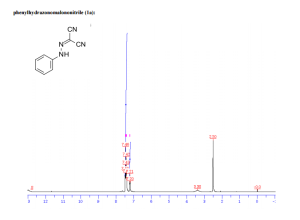




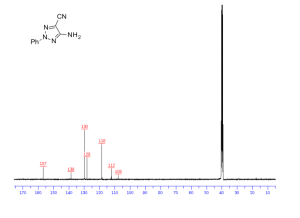
UCB Biopharma, Belgium



Uniqsis FlowSyn

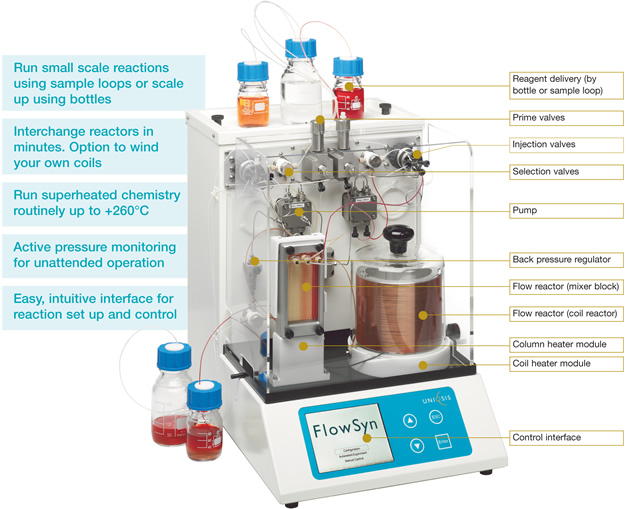
| Uniqsis Ltd |
| 29 Station Road |
| Shepreth |
| Cambridgeshire |
| SG8 6GB |
| UK |
| Telephone |
| +44 (0)845 864 7747 |
| info@uniqsis.com |
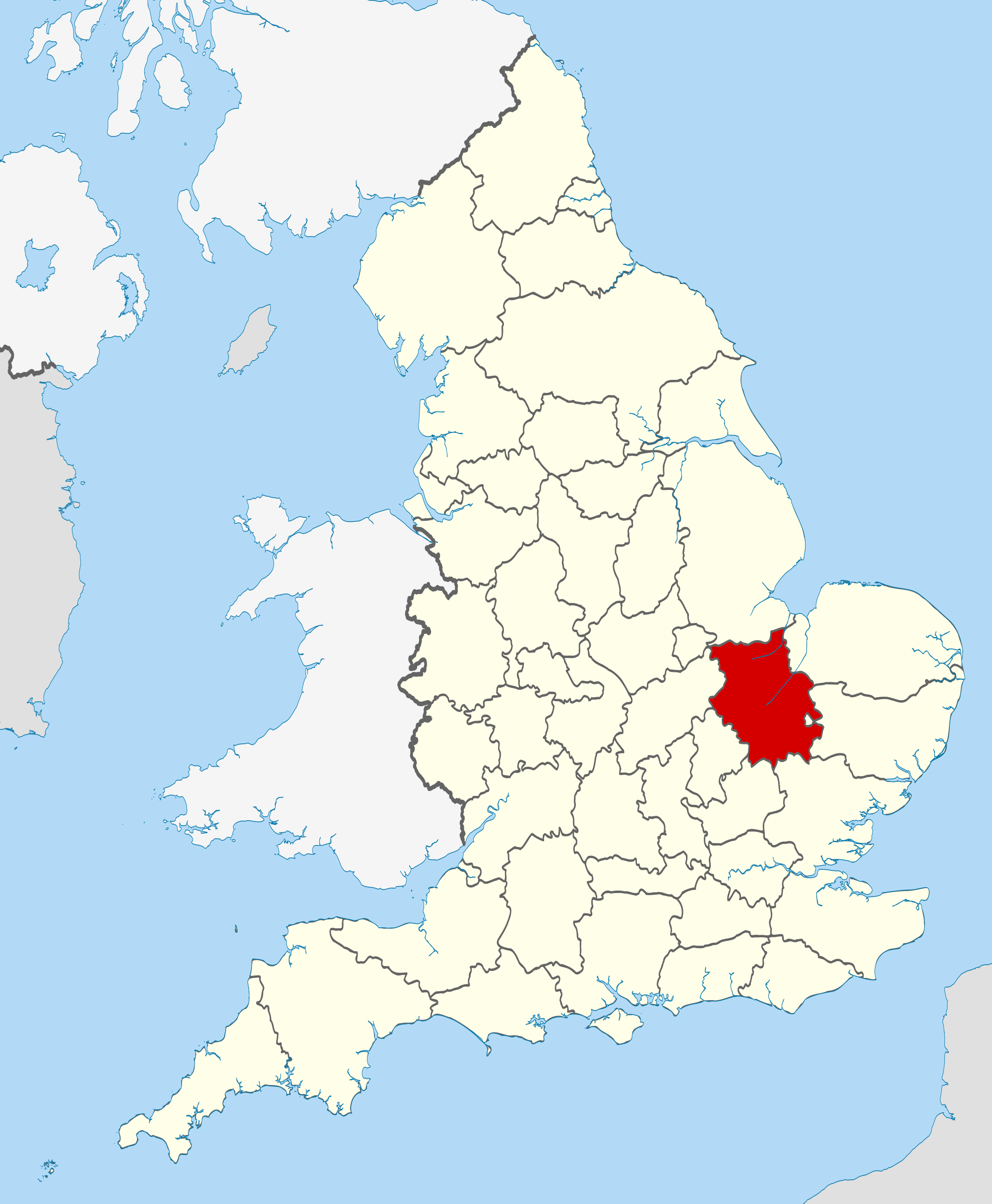




 Halifax survey names South Cambridgeshire as best place to live in rural Britain
Halifax survey names South Cambridgeshire as best place to live in rural Britain///////////FLOW SYNTHESIS, UCB Biopharma, Belgium, Uniqsis FlowSyn
10 Best Regional Foods you must Try in Mumbai!
1. The Street Food
Where – In South Mumbai, Girgaum Chowpatty snack shops, Bachelors for shakes, Indian style pizzas and sandwiches, and Homji Street Khao Galli (Fort) offer a spectrum of street food. Cannon (near CST) and Sardar (Tardeo) are famous for Pao Bhaji, Gurukrupa (Sion) for Samosa Ragda and Haj Ali Juice Centre for fresh juices, fruit cream, sandwiches and Indian style pizzas.
2. A Konkani Coastal Meal
Where – Satkar (near Goregaon station) for Malvani, Highway Gomantak (on the Western Express Highway, Bandra East) and Goa House (Juhu), Singhudurg and Pradeep Gomatak (Fort).
3. A Typical Vegetarian Maharashtrian Meal
Where: Aaswad (opposite Sena Bhavan in Dadar) and Prakash (Dadar) though Vinay Health Home (Charni Road) comes highly recommended as well.
4. A South Indian Meal
Where: Most Udupi style restaurants have gotten Mumbaified in their offerings but there still are a few in Matunga like Ramanayaks Udupi (the thaali is what this place is most famous for), Udupi Idli House (absolutely fantastic range of idlis, chutneys and unlimitedsambhar), Café Madras (recommend almost everything here but the Podi Upma and Ragi Dosa are favourites), Ramashray (great idlis and dosas) and Manis Lunch Home (known for the thaalis).
5. Bori Mohalla Food Trail
Where: Savoury – Sarvii Valibhai Payawal, Surti 12 Handi (Handi), Noor Mohamadi Hotel (Chicken Sanju Baba, the recipe for which was allegedly given to the hotel by Sanjay Dutt), Indian Hotel (kebabs and rolls), Mohammed Kareem Chana Masale Wala (Channa Masala).
6. An Irani Cafe for a Parsi Meal
Where: Kyani (near Metro cinema) and Yazdani Bakery, Ideal Corner, Jimmy Boy (try their new Parsi Wedding feast), Military Cafe (all in Fort), Britannia (personally, I am of the opinion that the Berry Pulav is hyped but it certainly has great appeal and the berries themselves are a lovely tart-sweet payoff). In the suburbs, I would highly recommend theSalli Boti at Ashmit’s Snack Shack (Bandra, Pali Junction).
7. A Mangalorean Meal
Where: Apoorva (Fort) and Pratap Lunch Home (Fort) offer fantastic home-style food while Trishna (Fort) and Mahesh (Fort and Juhu) are more famous high end ones; great if you want to try crabs, jumbo prawns, lobster and pomfret in a tandoori masala or International sauces.
8. A Modern American/International Meal
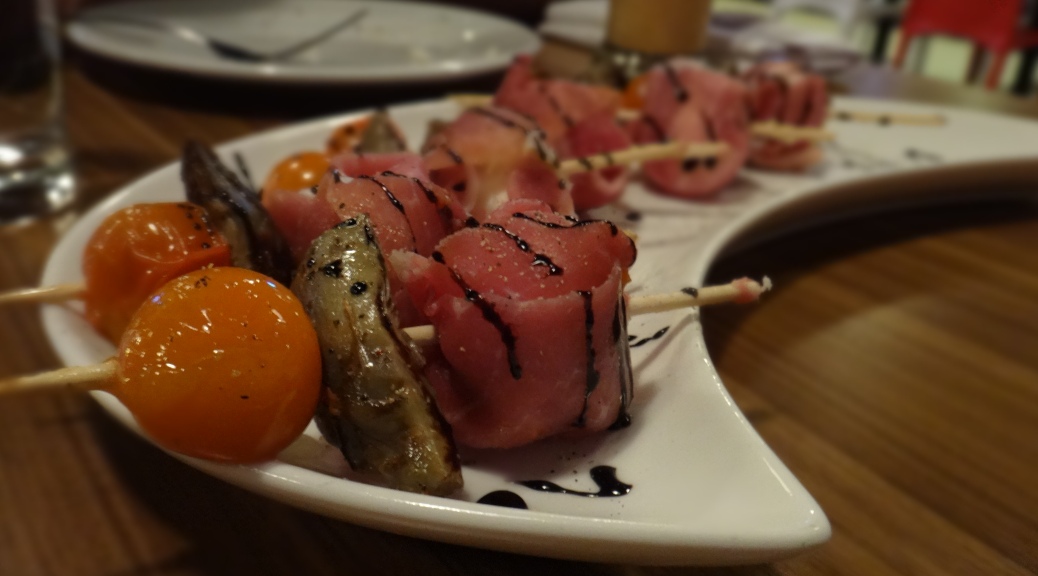
Where: Indigo Deli branches around the city, Indigo Restaurant (Colaba) broke new ground a decade ago in offering five star quality contemporary international food at relatively affordable prices in restaurants around the city.
9. Mumbai’s Old School Bars
Where: Leopold, Café Mondegar and Café Churchill all flank the Taj Mahal Hotel in Colaba. Totos Garage and Janata Bar are both in Bandra.
10. Regional Bests
Where: Head to Bhojohori Manna (Oshiwara) for superlative home-style Bengali food, Punjab Grill (Juhu or Phoenix Mills) for fantastically authentic Punjabi fare. Soam (Girgaum) and Hiralal Kashidas (Girgaon) make fantastic Gujarati Undhiyo when the season is right. Deluxe (Fort) and Just Kerala (Andheri East) are known for their non-vegetarian Kerala meal, Chetna (Fort) for its Rajasthani thali and Maharaja Bhog (Goregaon, Inorbit Mall) for a Gujarati and Rajasthani melange.
/////////
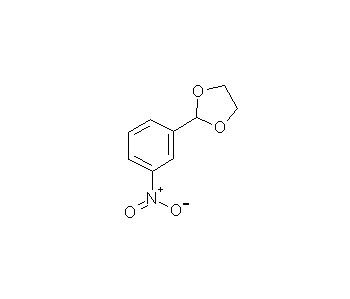









 are dissolved in cyclohexane (200 mL) in a dry 500 mL round bottom flask equipped with magnetic stirring bar, Dean Stark trap and reflux condenser. The reaction mixture is refluxed until no more water
are dissolved in cyclohexane (200 mL) in a dry 500 mL round bottom flask equipped with magnetic stirring bar, Dean Stark trap and reflux condenser. The reaction mixture is refluxed until no more water  is collected in the Dean-Stark trap (approx. 2-3 h
is collected in the Dean-Stark trap (approx. 2-3 h 










 and high selectivity. Also the purity of the end product is very high.The mass efficiency is high to medium, compared to the other NOP experiments and thus evaluates as good
and high selectivity. Also the purity of the end product is very high.The mass efficiency is high to medium, compared to the other NOP experiments and thus evaluates as good 
















